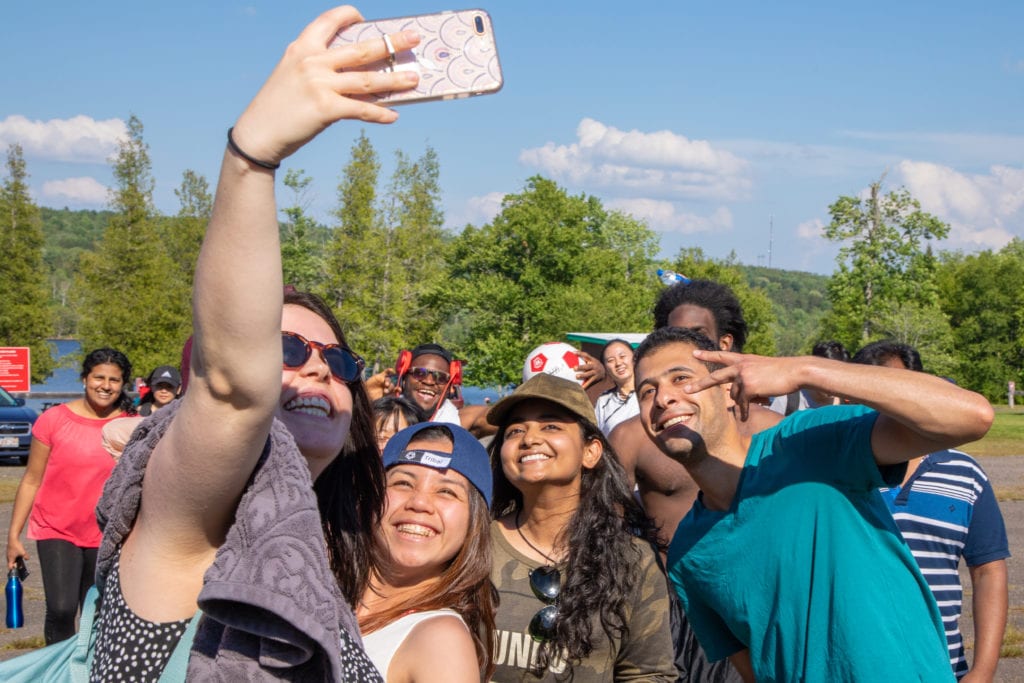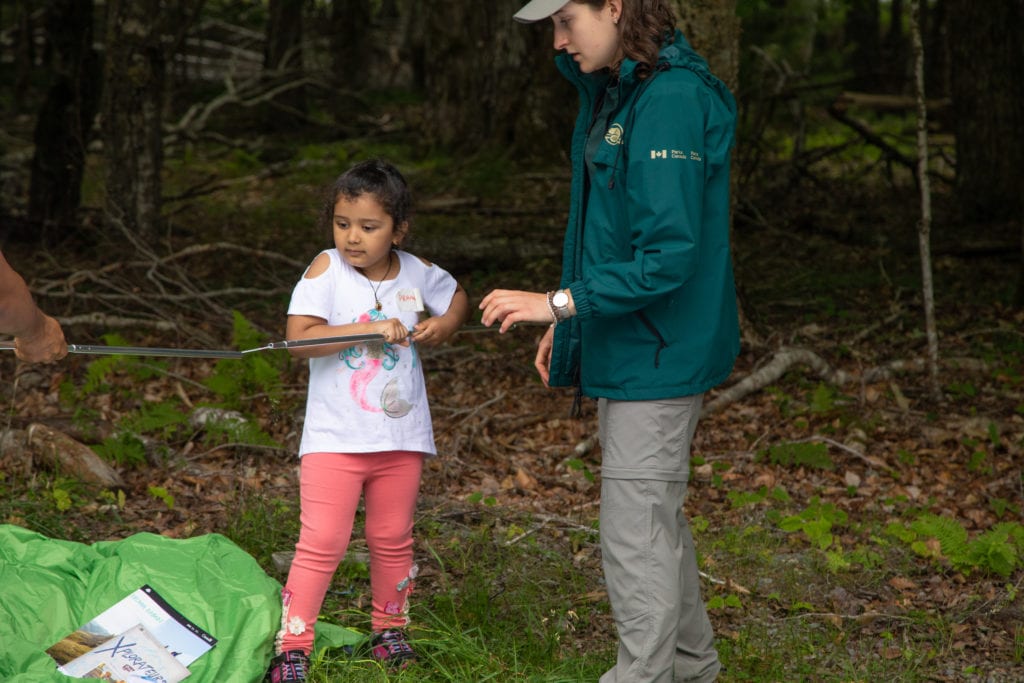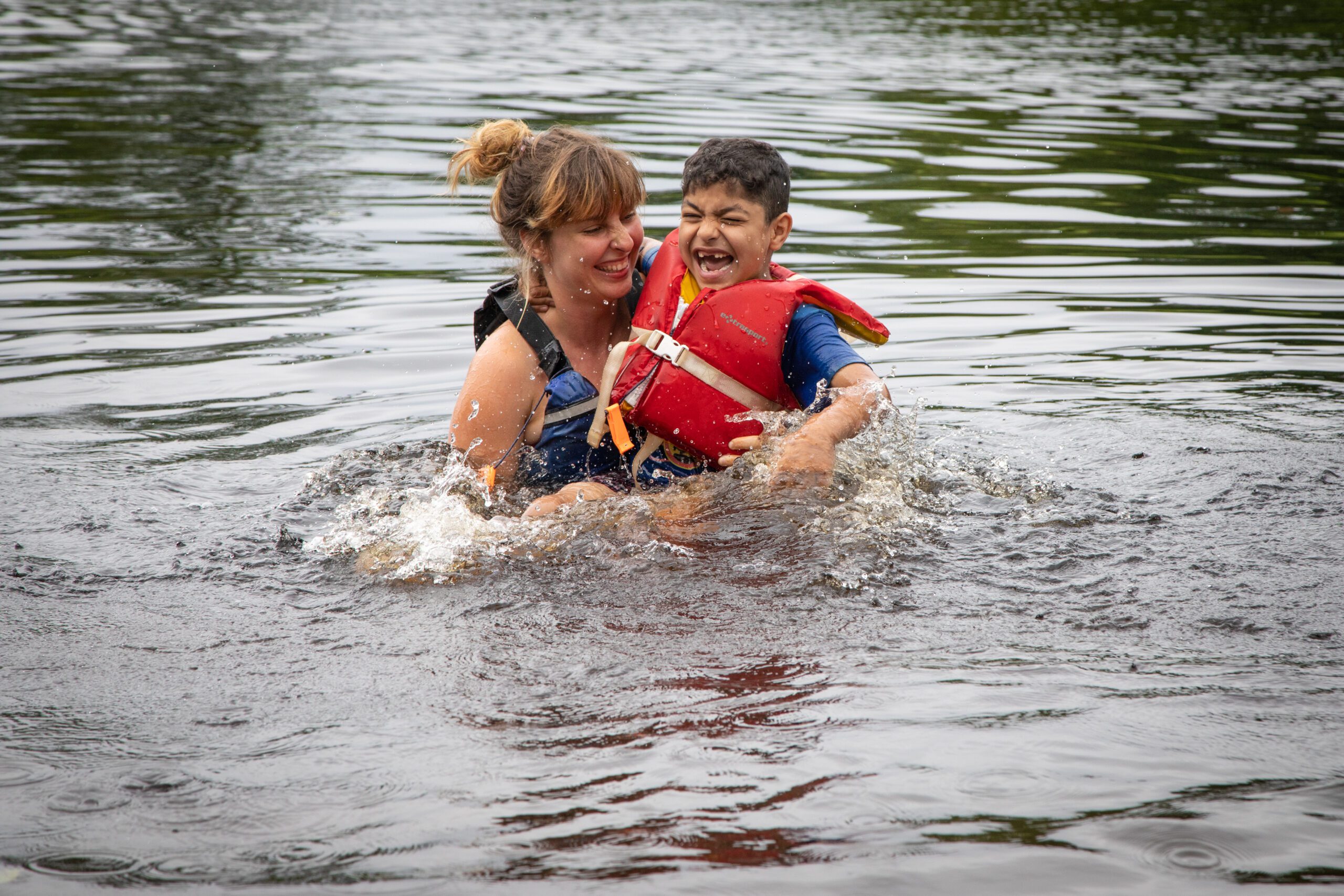Newcomers to Canada often arrive with no idea how to engage with the vast, wild lands of our parks. A Parks Canada program, run in partnership with a small Nova Scotia company, aims to change that. Over the past few years, hundreds of newcomers, including many Syrian families, have participated in their Learn-to Camp programs.
“Before we started running this program, there was a real debate at the beginning about whether or not this would make sense – especially for newcomers fleeing conflict who’d spent years living in a tent in a refugee camp, and then like we’re like, “Hey, welcome to Canada. Now we’re going to put you back in a tent!” says Jan LaPierre, who runs A for Adventure with his friend Chris Surette and partners with Parks Canada to deliver camps across the country. “To me, it always made sense because nature is the single best therapist there is, and if we created a safe and inclusive space and a place where there is as little judgment as possible, then that’s exactly where people should be.”
You may unsubscribe from any of our newsletters at any time.
Shereef Salama arrived in Fredericton, N.B., from Egypt 20 months ago, and has participated in both summer and winter Learn-to Camp programs. He says that before going on his first trip, he was struggling to feel at home and accepted in Canada. “On my first trip, there were people from Africa, Asia, South America, and we were all talking English at various levels, but it was how culturally different we all were that blew my mind,” he says. “It made me see that Canada was just another culture I needed to adapt to, and I knew I could do that.”

Salama says his first camping experience was “Amazing. I had never been exposed to nature like this before. Everything was so green! There was so much water! Being out in nature was bliss. Honestly, I just loved it.”
Thanks to Learn-to Camp, newcomers from all over the world have connected with Canadian parks close to where they live, and tried camping for the first time without needing to buy equipment. “Learn-to Camp helps newcomers overcome barriers to enjoying outdoor activities and visiting Parks Canada’s places, by gaining the skills and confidence they need to one day embark on a camping trip of their own,” says Aaron Shenkman, the Learn-to Camp coordinator for Parks Canada, adding that the benefit to our parks is that we encourage new Canadians to become stewards for our most beautiful and vulnerable spaces.

There are a number of ways that newcomers find out about the camps. Parks Canada has outreach teams who share information in communities, and partners with various groups like the YMCA and immigration services organizations. Mountain Equipment Co-op also helps the parks agency run a number of the camps.
While the educational aspect is important — newcomers learn how to set up a tent and use a camp stove, and paddle a canoe if they’d like — there’s something more basic about it that makes the program so great at bringing people together and helping them feel at home in our country. “As much as there are cultural differences, people come together fast because we all have this innate need as humans to sit around a campfire and share food together,” says LaPierre. “We’re just sitting there doing what people around the world have done for hundreds of thousands of years.”
Parks Canada works closely with partner organizations such as ISANS (the Immigrant Services Association of Nova Scotia), which can assist newcomers in joining this important program. At times, their own staff join in. This way, says Shenkman, participants can learn about camping while maintaining a strong communal support net.
There have been many moments of joy for LaPierre, especially when it comes to seeing how children thrive in the program. “We see participants come in and they are literally bearing the scars of war on their faces and on their bodies, tiny kids who are five or six years old and they’ve got scars from shrapnel where windows have blown up in their face, it’s hard to even believe or fathom,” he says, “But these kids are right there in the moment, happy and being regular kids.” LaPierre recalls how on one trip to Kejimkujik National Park in Nova Scotia a few years ago, a Syrian father was overcome with emotions watching his children play. “He told me that he’d never seen his children play safely in the woods, and it brought him so much joy. If there is a little bit of green space in Syria, you don’t go in there because there could be a landmine or something, so this was new for them all,” says LaPierre.
One thing that LaPierre hears again and again from program participants is how lucky they feel to be here in Canada and how welcoming Canadians have been to them. “I, like many people, get super frustrated about what is going on here in Canada at different times, but this makes me realize how I won the geographical lottery of being born here,” he says, “It makes me feel pretty proud about being a Canadian.”
A for Adventure and Parks Canada will run their next Learn-to Camp program in Kejimkujik National Park from July 20 to 21.
For more of Broadview’s award-winning content, subscribe to the magazine today.














